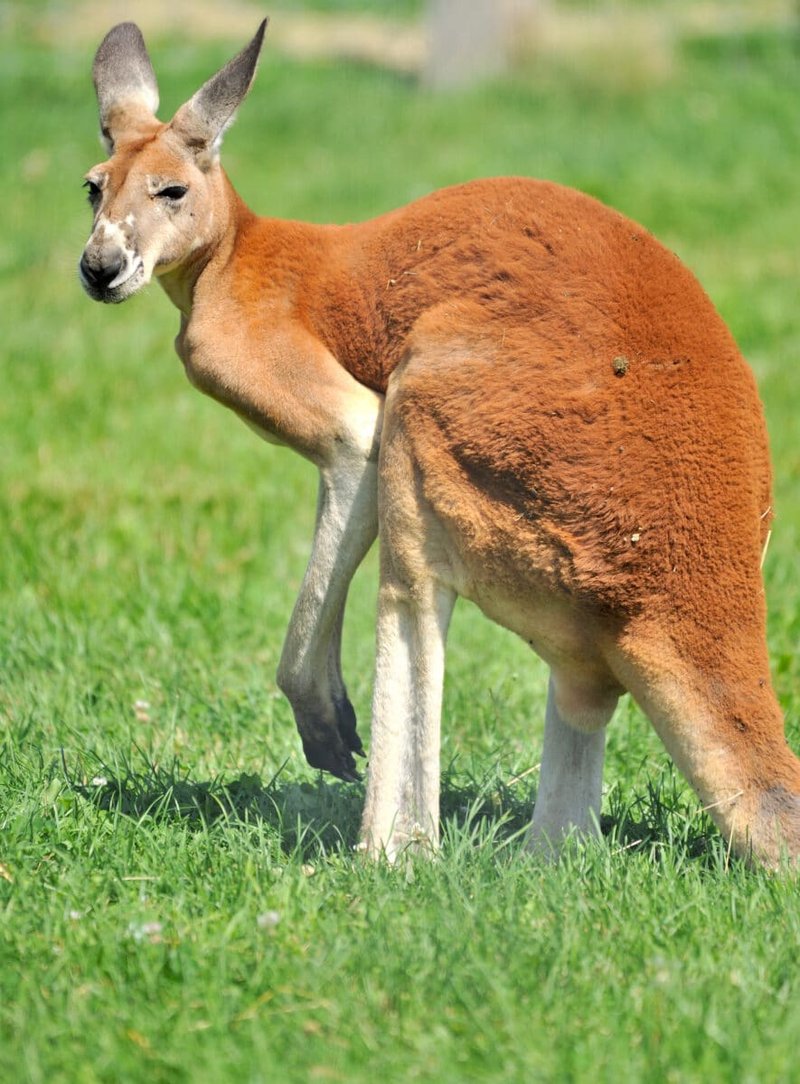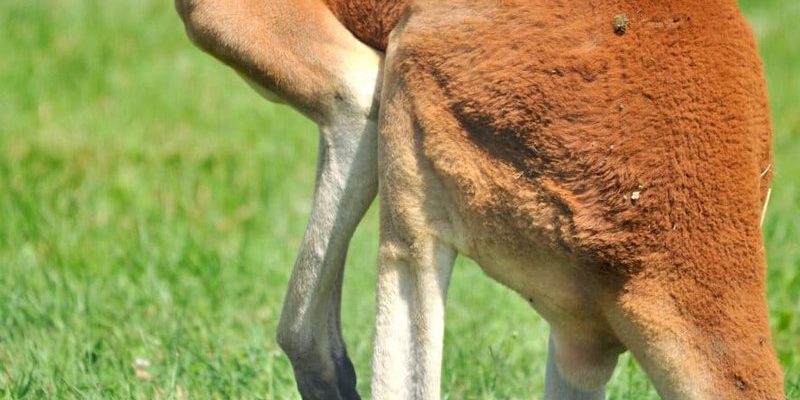
When you hear about the red kangaroo, you might picture it as a giant, lumbering creature with a temperament just as wild as its home turf. However, the reality can be much more nuanced. The red kangaroo is fascinating, both in its biology and behavior, and understanding it can help us appreciate these unique animals even more. So, let’s dive into some of the most common misconceptions about the red kangaroo and shed some light on the truth behind the myths.
Myth 1: Red Kangaroos are Just Like Other Kangaroos
One of the most common misconceptions is that all kangaroos are identical in behavior and appearance. While it’s true that they share some common traits, red kangaroos are quite different from their relatives, like the grey kangaroo or the tree kangaroo.
Red kangaroos are the largest of all kangaroo species. They can stand over 6 feet tall when fully grown, making them quite a sight to see. Their size isn’t just for show; it helps them regulate their body temperature in the harsh Australian climate. This regulation is crucial since the outback can be unforgiving, with temperatures soaring during the day.
In addition to their size, red kangaroos have a distinct reddish-brown color, which sets them apart visually. This striking fur helps them blend into the arid landscapes of central Australia. So, while they may share the kangaroo family name, these differences are essential for their survival.
Myth 2: Red Kangaroos Are Aggressive Creatures
You might be wondering if a red kangaroo will charge at you like some wild animal if you ever encounter one. The truth is, red kangaroos are generally not aggressive unless provoked. They are more likely to hop away than to confront a human.
When feeling threatened, red kangaroos prefer to escape rather than fight. They’d rather use their powerful legs to bound away—sometimes reaching speeds of up to 35 miles per hour! Imagine trying to chase one of those. However, if cornered, they might use their strong hind legs to kick. That being said, most red kangaroo encounters are peaceful, and they tend to keep their distance from humans.
This doesn’t mean you should approach them as if they are pets, though! Respect their space. If you ever find yourself in their natural habitat, observing them from a distance is the safest route.
Myth 3: Red Kangaroos Only Live in Australia
It’s a common belief that red kangaroos are exclusive to Australia, but did you know that they can also be found in nearby islands and regions? While the majority of them do roam freely across the Australian outback, some can be found in zoos and wildlife parks around the world.
In captivity, red kangaroos thrive as well, providing opportunities for people to learn about them up close, which is fantastic. This is especially true in places that focus on conservation and education.
Additionally, certain wildlife sanctuaries in Australia are working to ensure that red kangaroo populations remain healthy and sustainable. Conservation efforts are pivotal in protecting these animals from habitat loss and other threats.
Myth 4: All Kangaroos Can Use Their Pouches
You might picture all kangaroo moms carrying their young in their pouches, but not every kangaroo species has this feature. Many people think the pouch is a universal trait, but in reality, it’s primarily the females of specific species, like the red kangaroo, that have them.
The pouch serves as a safe haven for the little ones during their early development stages. When a baby kangaroo, called a joey, is born, it’s tiny—about the size of a jellybean. It scrambles into the mother’s pouch to continue developing while secured and protected. This adaptation is vital for survival; in the harsh outback, safety is crucial!
Some species, like tree kangaroos, also have pouches, but their structure and function can differ. It’s fascinating to see the diversity within the kangaroo family, making the red kangaroo’s adaptations particularly interesting.
Myth 5: Red Kangaroos Are Nocturnal
You might think that red kangaroos are active during the night, like some other Australian wildlife. However, they are primarily crepuscular, meaning they’re most active during dawn and dusk. This behavior helps them avoid the scorching heat of midday, conserving energy and staying cool.
During the hotter parts of the day, you’ll find them lounging in the shade, conserving water and keeping their bodies cool. This adaptation is key to their survival in an environment where temperatures can climb high.
Their crepuscular habits also make them fascinating to watch in the early mornings or late evenings when they’re out foraging for food. If you are lucky enough to spot a red kangaroo in the wild, these times of day are your best bet!
Myth 6: Red Kangaroos Eat Only Grass
It’s easy to think that red kangaroos have a one-track diet of grass, given their outback lifestyle. However, these animals are actually quite adaptable eaters. While they do enjoy a good bite of grass, they also munch on leaves, shrubs, and other vegetation.
Their digestive systems are specially adapted to extract moisture from the tough, fibrous plants found in their habitat. This allows them to survive in areas where water may be scarce. They’ve evolved to get the maximum nutrients from what’s available, which is pretty clever if you ask me!
During times of drought or when food is limited, their flexible diet becomes even more critical. They’ll switch to whatever green shoots or leaves they can find, showcasing their ability to adapt to changing environments.
Myth 7: Red Kangaroos Are Always Alone
You may picture red kangaroos as solitary creatures, bounding across the vast outback alone. In reality, they are social animals that often gather in groups known as “mobs.” These mobs can consist of a few individuals or up to fifty kangaroos, providing safety in numbers.
Being part of a mob offers protection from predators and creates a social structure where they can interact. It’s not just about survival; they engage in grooming and bonding behaviors, making their interactions rich and varied.
So, if you ever see a bunch of kangaroos together, know that they enjoy each other’s company just like we do!
Understanding the real story behind the red kangaroo can deepen our appreciation for these unique creatures. They are more than just hopping symbols of Australia; they are complex beings with fascinating behaviors and adaptations that help them thrive in their environment. From their social structures to their diverse diets, there’s so much to admire.
As we continue to learn about them, let’s make sure to separate the myths from the facts. Whether you dream of seeing these magnificent animals in the wild or from the comfort of a zoo, knowing their stories will enhance your experience. So, the next time you think of the red kangaroo, remember that each tale and truth enriches our understanding of this iconic Australian animal!

